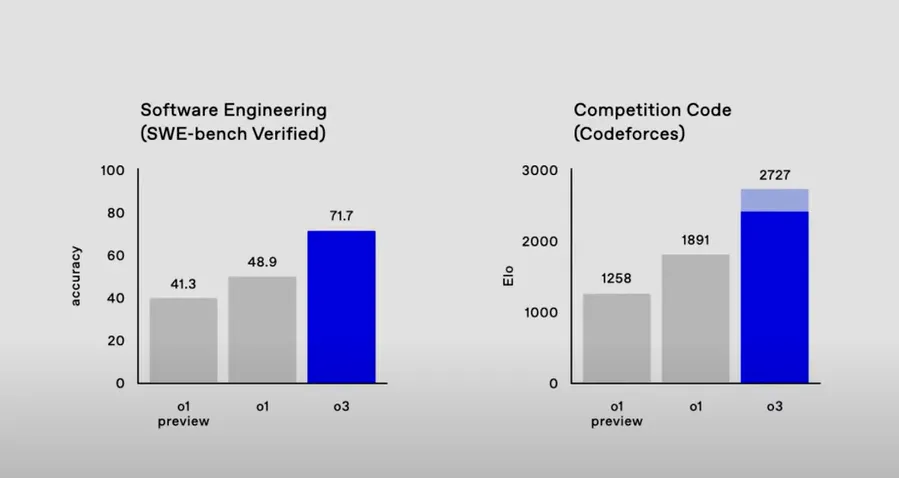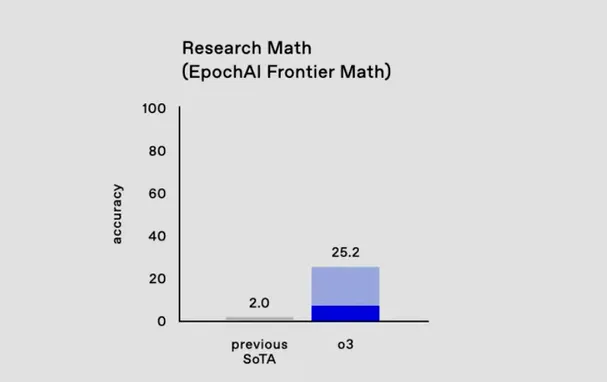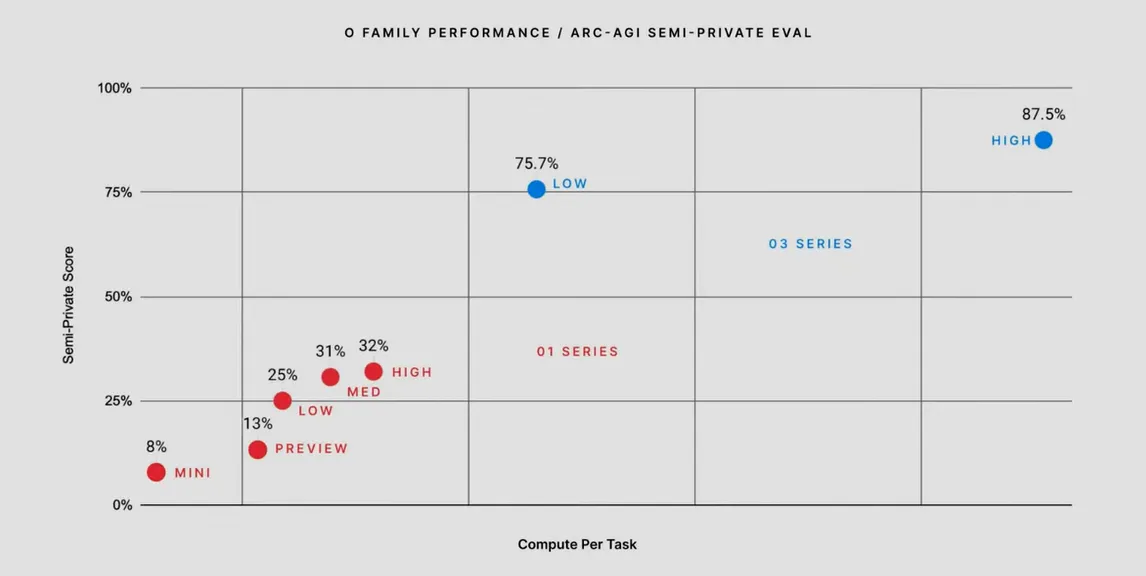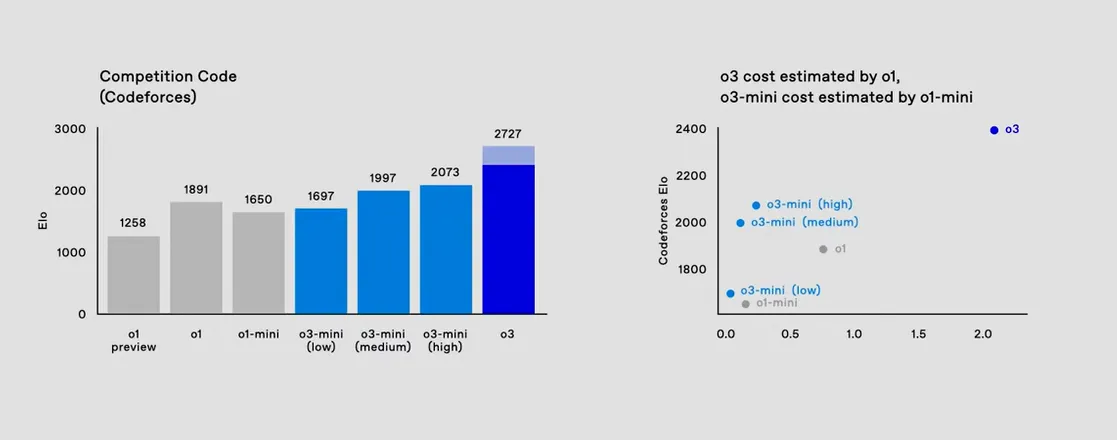OpenAI’s O3: A New Frontier in AI Reasoning Models
OpenAI’s O3: Pushing the Boundaries of Reasoning with Breakthrough Performance and Cost Efficiency
Created Dec 20, 2024 - Last updated: Dec 20, 2024
The world of AI continues to evolve at an astonishing pace, and OpenAI’s latest announcement has left the community buzzing with excitement. After the success of the O1 model, which was launched just 12 days ago, OpenAI has introduced the O3 series — marking a significant leap forward in the ability of models to tackle complex reasoning tasks.
From O1 to O3: A New Chapter in AI
While the launch of the O1 model was a milestone in reasoning AI, OpenAI has set its sights on even more challenging frontiers. The O3 models are designed to address tasks that require an advanced level of reasoning, from coding to mathematics and beyond. In this post, we’ll see the capabilities of O3, its performance benchmarks, and the innovative O3 Mini, all of which are set to redefine the boundaries of AI reasoning.
Introducing O3 and O3 Mini
As Sam Altman, OpenAI’s CEO, introduced, O3 is an extremely smart model, while O3 Mini offers impressive performance at a reduced cost. The names may not follow the expected sequence — after O1, you’d assume the next model would be O2 — but OpenAI chose to call this new generation “O3”.
The O3 and O3 Mini models are not yet available for public use, but OpenAI is making them accessible for public safety testing, allowing researchers to get involved in refining the models. This process marks the beginning of a new era where OpenAI can integrate community feedback to ensure the safety and efficacy of its models at such a high level of capability.
Performance Benchmarks: O3 Sets New Standards
OpenAI has provided detailed insights into the capabilities of O3, with a particular focus on coding and mathematics, two areas where AI has seen rapid development.
Coding Benchmarks:
- The O3 model performs remarkably well in coding challenges, such as those found on competitive platforms like Codeforces. It achieved an ELO rating of 2727 — nearly 800 points higher than the O1 model, which had an ELO of 1891. This impressive leap signifies O3’s ability to solve complex coding problems with greater accuracy and efficiency.

Mathematical Reasoning:
- O3’s performance on competitive mathematics exams is another standout feature. For example, the model achieved a 96.7% accuracy on the American Mathematics Competitions (AMC), far surpassing the O1’s 83.3%. This marks a major leap in AI’s ability to handle complex, multi-step mathematical problems.
PhD-Level Science Questions:
- On the GPQ Diamond benchmark, which measures AI performance on PhD-level science questions, O3 achieved 87.7%, outpacing the O1 by a solid 10%. To put this into perspective, human experts in specialized fields tend to score around 70%, showing that O3 is now approaching the level of human-like problem-solving in science and mathematics.
Epic AI’s Frontier Math Benchmark:
- In a particularly tough test, the O3 model achieved a score of 25% — a remarkable feat considering that most AI models struggle to score above 2% on this extremely hard set of mathematical problems. This achievement further demonstrates O3’s proficiency at handling real-world challenges.

Arc AGI Benchmark:
- Another breakthrough came in the Arc AGI benchmark, which tests a model’s ability to reason in ways that general intelligence would require. O3 scored an impressive 75.7% on this benchmark, with a high-compute version pushing the score to 87.5%. This is significant because human performance on this benchmark typically hovers around 85%, marking a new milestone in AI development.

O3 Mini: Efficiency Meets Performance
While O3 is a powerhouse model, OpenAI has also introduced O3 Mini, designed to offer a more cost-effective option without sacrificing too much performance. O3 Mini is particularly exciting for developers and organizations looking to integrate AI reasoning capabilities while maintaining a lower operational cost.

Key features of O3 Mini:
- Cost Efficiency: O3 Mini delivers strong performance at a fraction of the cost of O3, making it ideal for applications where cost is a critical factor.
- Adaptive Thinking Time: The model allows users to adjust the reasoning effort (low, medium, or high) based on the complexity of the task at hand. This flexibility ensures that developers can fine-tune the model’s performance to fit their needs.
Live Demos and Future Prospects
OpenAI has provided some live demonstrations to showcase the O3 Mini’s capabilities. During a demo, the model was tasked with generating and executing Python code, answering complex questions, and evaluating a hard GPQ dataset with incredible speed and accuracy. The O3 Mini proved itself not only fast but also capable of handling highly intricate tasks efficiently.
Looking ahead, OpenAI plans to further refine these models, collaborating with external researchers to ensure that O3 and O3 Mini reach their full potential. As these models continue to evolve, they are expected to play a key role in shaping the future of AI-powered problem-solving.
Conclusion
OpenAI’s O3 and O3 Mini models represent a significant leap forward in AI reasoning capabilities. With breakthroughs in coding, mathematics, science, and general intelligence benchmarks, these models are poised to tackle tasks that were once considered too complex for AI. While they are still in the testing phase, their performance has already set new standards for what AI can achieve. As OpenAI continues to innovate and refine these models, we can expect even greater advancements in the field of artificial intelligence.
Stay tuned for more updates, as OpenAI is just getting started on its journey to unlock the full potential of reasoning AI!

